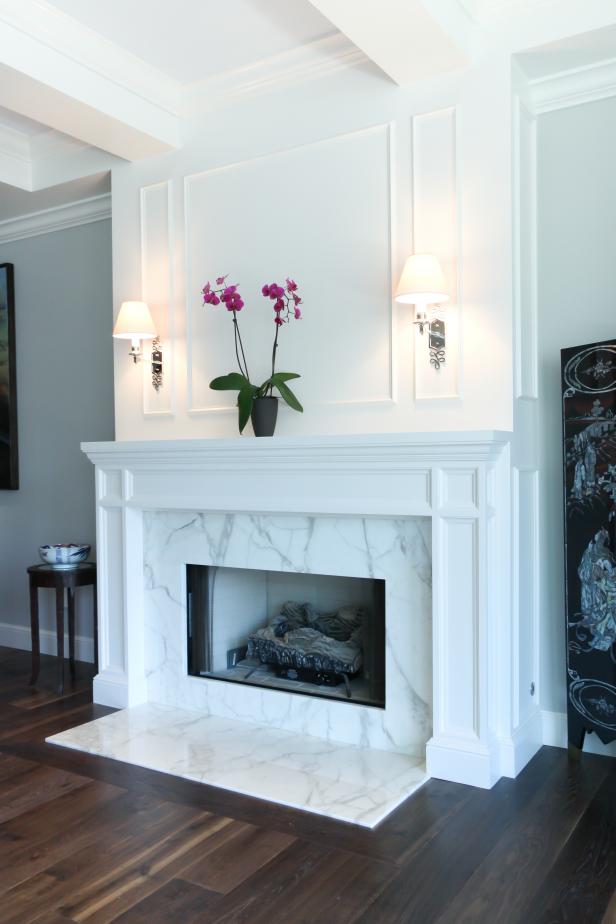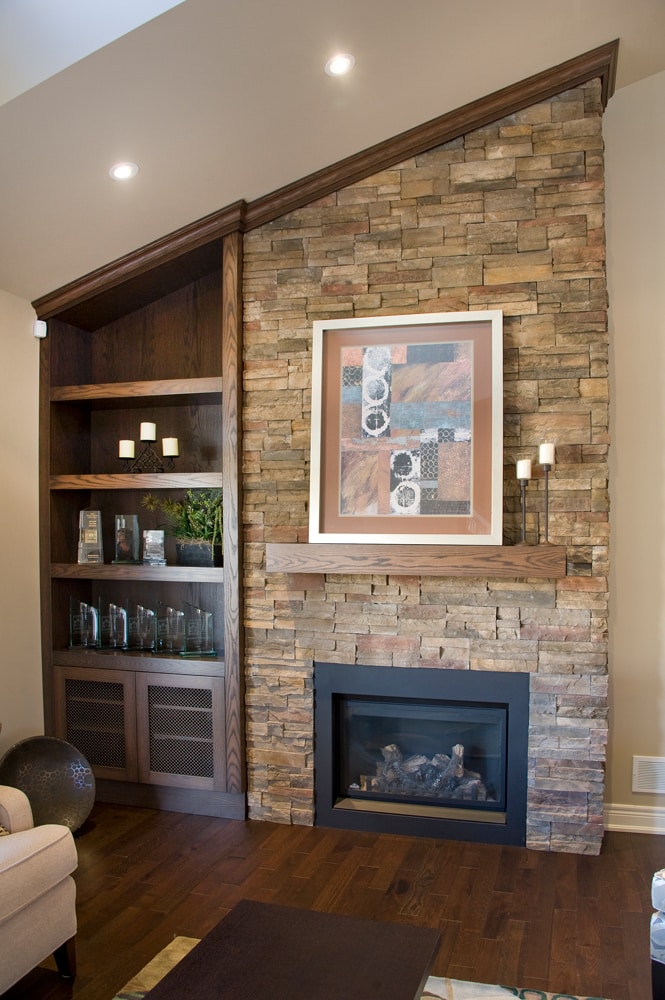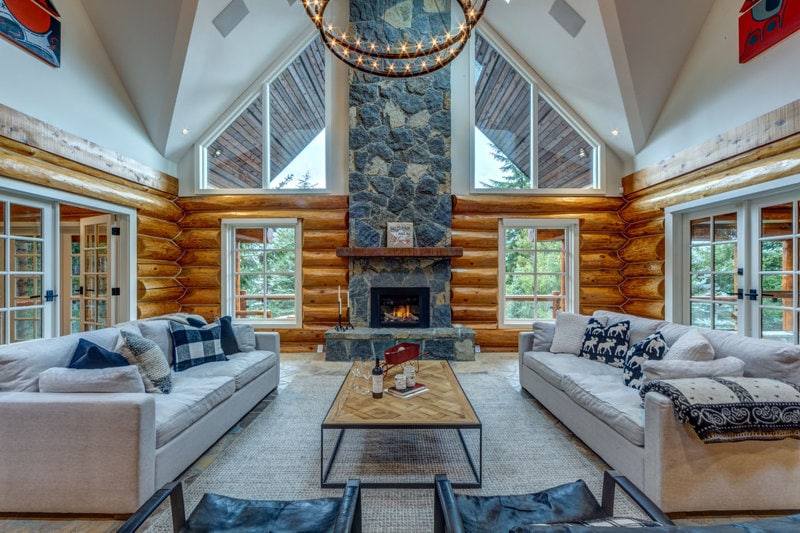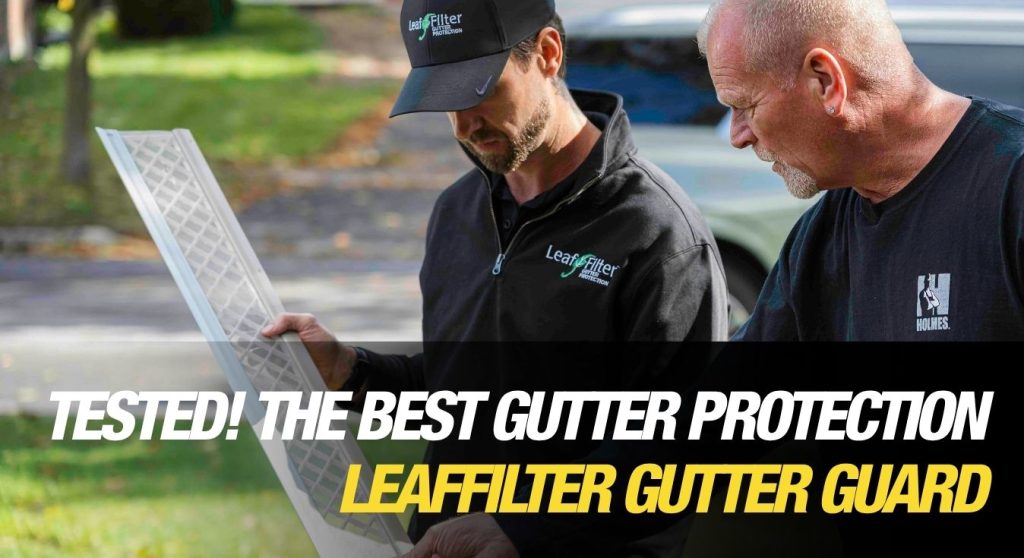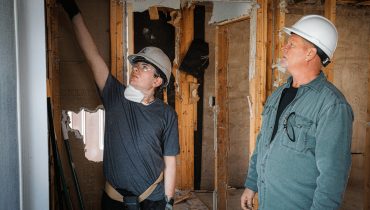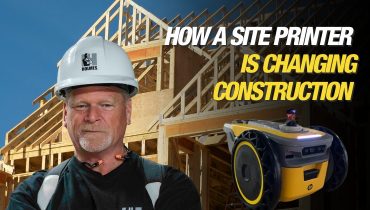For years I’ve been talking about protecting your home from the outside-in. And that includes protecting it against water intrusion. You always want water to move AWAY from your home’s...
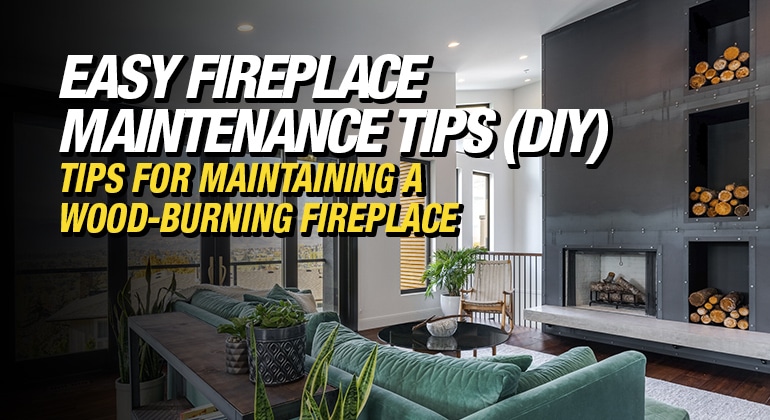
EASY Fireplace Maintenance Tips (DIY)
By Mike Holmes
Mike’s Advice / Home Renovation
Thursday, July 14th, 2022 @ 5:31pm
Tips For Maintaining a Wood-Burning Fireplace
There are many different types of fireplaces available. Some of these include wood-burning, gas, and electric. No matter what type of fireplace you have, you need to make sure it’s working properly. If not, you’re looking at things like a potential chimney fire or carbon monoxide leaking into your home. There are some basic fireplace maintenance tasks you should tackle every season.
According to The National Fire Protection Association, the leading cause contributing to home heating fires was a failure to clean, principally creosote from solid-fueled heating equipment, primarily chimneys.
I recommend tackling some basic tasks every few months and annually getting it inspected by a professional.
Wood-Burning Fireplace Maintenance Tips
Here are some maintenance tips for your wood-burning fireplace and chimney.
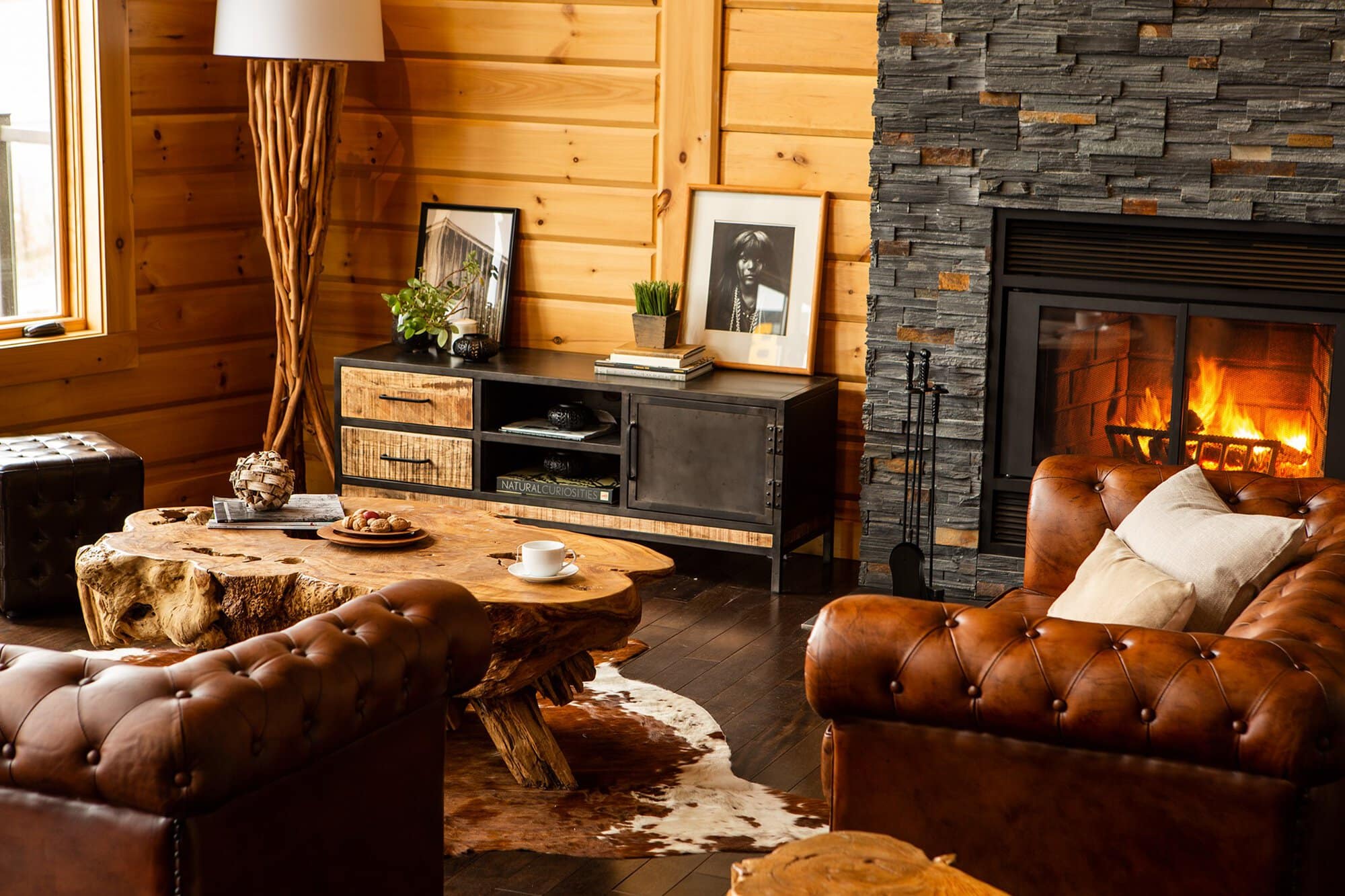
Living Room by Timber Block Homes, a Holmes Approved Home builder
#1 Get Rid Of The Ash
If you have a wood-burning fireplace, your job is to keep the firebox (the area where you build a fire) clean. After each use, dispose of the remaining ash. Make sure the fire has died and that the ash is cold. I would wait 12 hours before cleaning the firebox.
#2 Remove Buildup From Your Fireplace
Burning wood produces soot and creosote. That’s the dark residue that coats the inside of the firebox. interior walls of the firebox and reaching up into the lining of the chimney. It’s important to remove this buildup every season, or whenever the residue appears thick.
Creosote can actually release toxic gasses and is highly flammable. Creosote buildup is a major cause of chimney fires.
Creosote buildup is a major cause of chimney fires.
#3 Hire A Professional To Clean Your Fireplace
There are a lot of tasks I recommend hiring a professional for. Cleaning your fireplace is one of them. Why? A certified chimney sweep can inspect your fireplace and has the right tools to ensure its functioning properly. They will pick up on major issues such as cracks in the chimney lining or a damaged chimney cap.
A proper inspection of your fireplace can also tell you if the damper is sealing correctly.
Most companies will offer several options for inspecting your chimney. You can also consult with your chimney sweep company about what sort of inspection is recommended for your system.
#4 Fix Spalling Brick And Missing Mortar
Spalling brick and missing mortar aren’t safe for your home. They allow water and moisture to come in.
#5 Check For Cracked Flue
A cracked flue is very dangerous for a couple of reasons. First, it allows heat and smoke to travel to other areas in the home. That’s not safe. And it can also cause soot to build up quicker, which we don’t want to see.
#6 Check Your Fireplace’s Ash Pit
Your fireplace’s ash pit needs to be checked. I recommend doing this once every other year. If the ashes seem soggy and hard to remove, you might have a leak. If that’s the case, fix it sooner rather than later.
RELATED
Chimney Maintenance
Every chimney needs regular maintenance.
Think about it: Your chimney sticks up above your roof into the elements. It gets exposed to Mother Nature. This means rain, snow, freezing, and thawing. Pay attention to it. Bricks from your chimney can fall down and injure people or break holes in your roof.
Water can leak into your attic or living space, and gasses leaking through a corroded chimney liner can deposit residue and soot, or even kill you.
Animals love to build nests in chimneys and that can block the flue. This creates improper venting and can lead to dangerous fumes being forced back inside your home.
#7 Inspect Your Chimney
From the ground, do a visual inspection of your chimney. You should be looking for crumbling, loose or missing mortar. Are any bricks or stones loose? Do any stick out unevenly? I’ve even seen some leaning chimneys. Is yours leaning?
If you do spot signs of damage on the outside of your chimney, I can pretty much guarantee that the inside is even worse.
There might also be deterioration that you can’t see from the exterior of the chimney that could make it unsafe.
#8 Chimney Mortar Repair
Your chimney’s windward side (the one getting the most exposure to Mother Nature) may look worse than the other sides. Look for chipping mortar.
Repointing (or tuck pointing) is the process of chipping out the loose mortar and refilling the spaces between the bricks with the new mortar.
If your chimney is in really bad shape, it may need to be taken down and completely rebuilt. That’s a huge job, and one you can avoid if you maintain your chimney properly.
RELATED: Common Issues with Bricks
#9 Check For Water Damage on Your Chimney
A typical masonry chimney is built from bricks and mortar with a metal or terra cotta liner. Unfortunately, every part of it will deteriorate with contact with water. Brick is very porous and tends to absorb a lot of water, then wicks it to the chimney interior.
When water penetrates the mortar and brick, it can cause issues during the freezing and thawing cycles. It will actually crack the mortar and pulverize brick until your chimney is no longer safe. This happens over time and can lead to serious problems.
#10 Don’t Paint Your Bricks
Some people think painting your bricks actually makes them waterproof. I will never recommend painting your bricks, interior or exterior. If the paint isn’t vapour-permeable and seals the brick, moisture will become trapped inside the chimney. That will speed up the deterioration process.
I highly recommend looking into breathable brick staining instead. We get ours from Permatint.
Their stains combine natural minerals and inorganic pigments to lighten, darken, or completely change the color of masonry.
TIP: Contractors doing renovations without permits will sometimes use the chimney as a route for wiring, plumbing, or even gas lines – between floors. It is dangerous – and illegal. That’s not what a chimney is for.
#11 Use Your Fireplace SAFELY
This is an important part of your wood-burning fireplace checklist.
Preventing Chimney Fires
Failure to regularly inspect, repair, and clean a chimney can cause it to malfunction. It can also encourage dangerous build-up that puts your family at risk.
Every year I hear about tragic house fires caused by fireplaces and chimneys. Chimney fires can reach over 1,000 degrees Celsius. That is hot enough to destroy the chimney liner. It can also very likely burn down your house. Have your chimney professionally cleaned every year.
Consider HEPA filters
Consider using a HEPA filter in the same room as wood burning fireplace. A study from the University of British Columbia indicates that HEPA filters can reduce indoor particle pollution by 60%.
Carbon Monoxide Poisoning and Your Fireplace
I’ve seen people hook up the vent from a gas stove with the chimney cavity when it’s supposed to be directly vented to the outside. They hope the fumes and carbon monoxide would go up the chimney. Guess what: It doesn’t, and it can kill you.
A dirty, blocked, or poorly functioning venting system can contribute to carbon monoxide spillage into your home. Make sure a working smoke and carbon monoxide detector is installed in the same room as the wood burning or gas appliance. Test your detectors every month.
Gas Fireplace Maintenance Tips
Maintaining a gas fireplace is easier than maintaining a wood-burning fireplace. You need to stay on top of cleaning the area of dust and debris at least once a year.
Wipe down the glass. Use a glass cleaner specifically made for fireplaces. You don’t want to use a cleaner that may not be safe to use close to a fire.
Clean all the decorative stones and/or logs. You can use a vacuum for that and use a microfiber cloth to wipe the dust from the fireplace trim and louvers.
To ensure your wood burning system is in good working condition, the installation is compliant with building codes and is SAFE to use, have your chimney inspected by a qualified professional. Maintaining your fireplace should be on your home maintenance checklist every year. If neglected, it can create a fire hazard in your house.
Failure to regularly inspect, repair, and clean a chimney can cause it to malfunction. It can also encourage dangerous build-up that puts your family at risk.
READ NEXT

